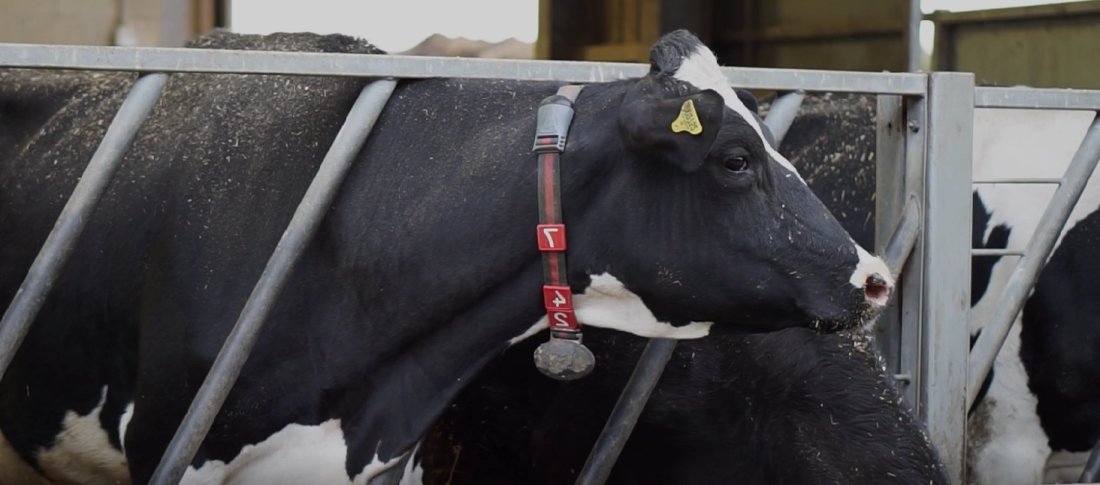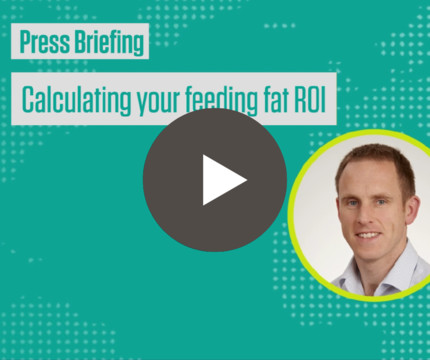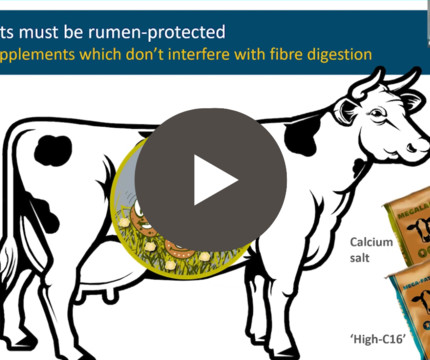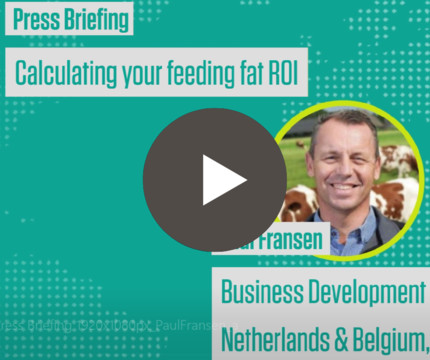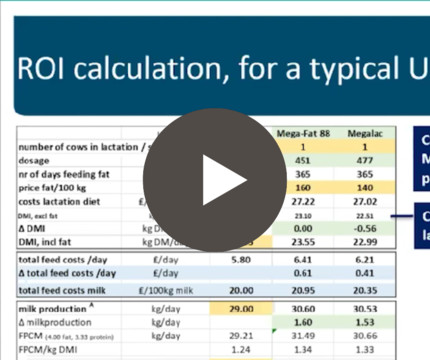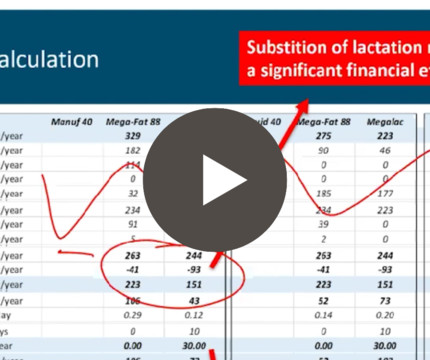Using the right fats at the right time can benefit your cows in a number of crucial ways - such as increasing fertility and improving milk quality. These are undoubtedly positive outcomes.
But with input costs rapidly rising around the world, farmers are having to make tough choices in terms of reducing necessary expenditures. Livestock feed is obviously a non-negotiable expense. Supplements such as feed fats, however, can often be seen as expendable.
We have discussed the role of fats in managing things such as body condition score and fertility, and why choosing rumen-protected supplements is important many times before. We have stressed the risks of making short-term choices to the long-term detriment of your farming business - not to mention your cows’ health.
Today we are here to discuss this challenge in direct, practical terms by exploring the question: What’s the return on investment feeding a high C-16 or Ca-salt?
And just as importantly, how can you calculate this?
Fats and nutrient balance
First, let’s remind ourselves exactly why feeding the right fats at the right time is so important.
Here’s Volac Wilmar Feed Ingredients’ Global Technical Manager, Dr Richard Kirkland, to explain:
Calcium salts and C-16 fatty acids are of particular importance:
When used in the right way at the right time, it’s these elements that will play a significant role in calculating your bottom line…
>>> Click here for help choosing the right fat for the task at hand…
What’s the return on investment feeding a high C-16 or Ca-salt?
Calcium salts improve body condition and fertility, as well as increased feed efficiency and milk production. High C-16’s provide increase feed efficiency and higher milk fat. These are the key elements at work in lactation feeds such as Megalac and Mega-Max 88, and are why they are so impactful when used as part of a nutritionally balanced diet.
To measure the true cost and benefit of feeding a product like Megalac or Mega-Max 88, you need to factor in the following:
Costs: the price of fat minus reduced intake of lactation ration
Fertility benefit: reduced calving interval due to less body condition loss in early lactation
Production benefit: more milk, higher solids
Value on production benefit depending on available milk payout system for protein, fat, lactose, and straight kgs of milk
Paul Fransen, Technical Business Manager for Europe at Volac Wilmar Feed Ingredients, breaks these factors down in greater detail:
Why use an ROI calculator?
Understanding the science behind feeding high C-16 or calcium salts and understanding the business benefits are two very different things. Your bookkeeper may have unrivalled business acumen, but could struggle to explain why high C-16 is so beneficial. Likewise with scientists: well-versed in the nutritional details, but unable to help you understand what it means for your bottom line.
That’s why we have been working hard to develop our ROI Calculator, as Paul Fransen explains…
Saving money on lactation feeds
Now we understand the 'what and the 'why' behind our ROI calculator, let’s put it to the test and demonstrate how you can use it to track expenditure and benefits from investing in lactation feeds:
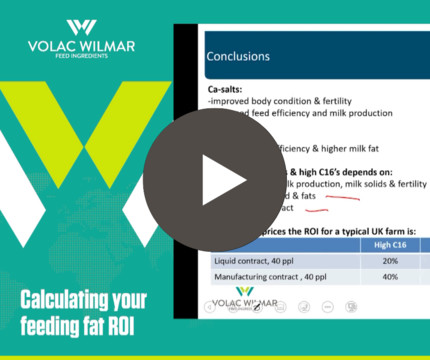 Here, Paul Fransen explores the calculations at play in finer detail, helping you gain a clearer understanding of how this tool works and some of the key variables at play:
Here, Paul Fransen explores the calculations at play in finer detail, helping you gain a clearer understanding of how this tool works and some of the key variables at play:
Full video:
You can watch the discussion in its entirety here: 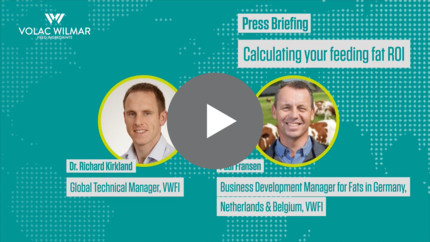
There’s a lot of information that goes into accurately calculating the ROI of your lactation feeds. Thankfully, with the help of this calculator, it has never been easier to see the outcome of your input in clear terms.
Look beyond the short-term savings of cutting lactation feeds and commit to giving your cows the nutrients they need to ensure the long-term health of both your herd and your farming business.
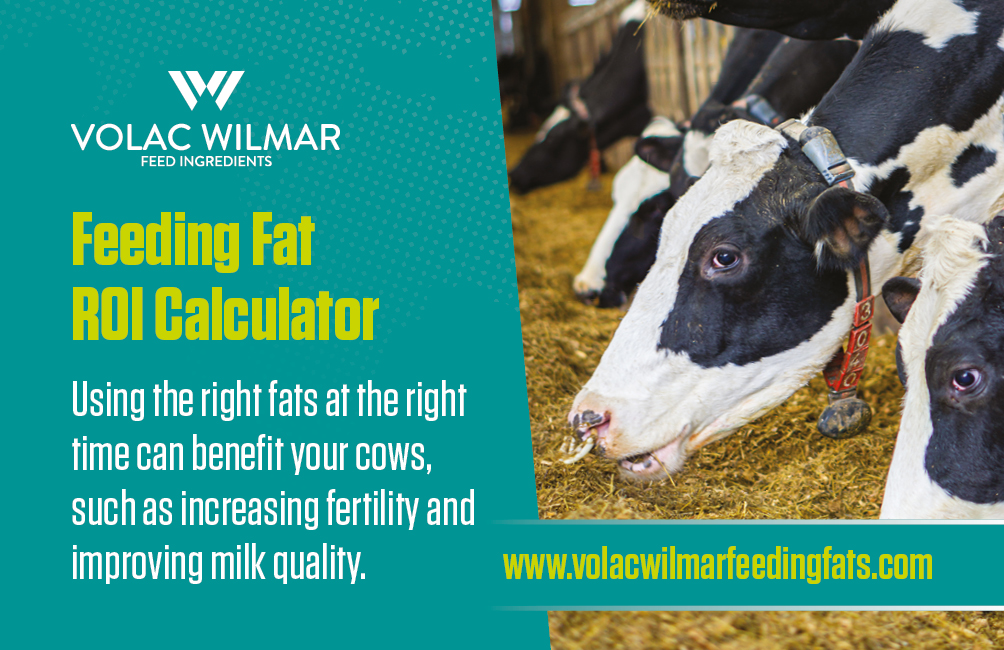 Calculate your return on investment for feeding fat supplements in rations here
Calculate your return on investment for feeding fat supplements in rations here
If you’d like to talk further with one of our experts and learn more about the subject, be sure to contact our team. You can also reach out to us on Twitter and LinkedIn.
